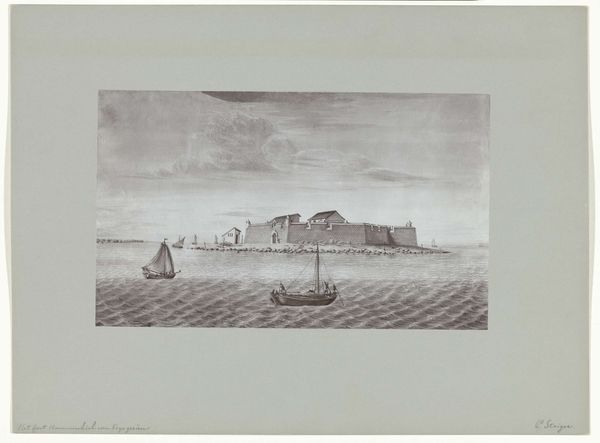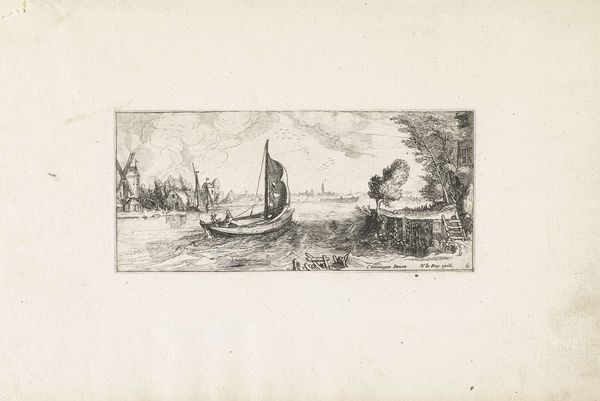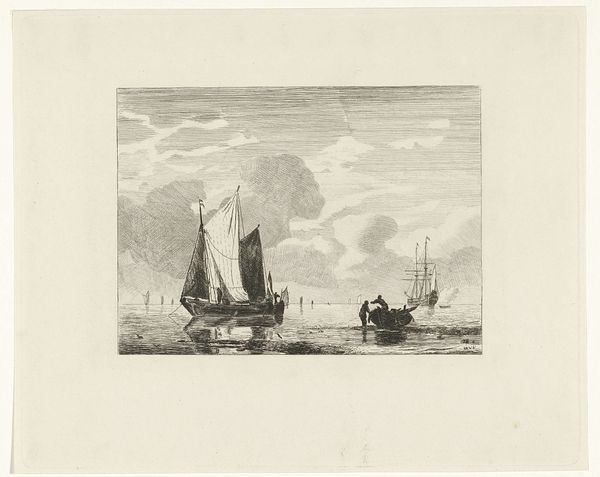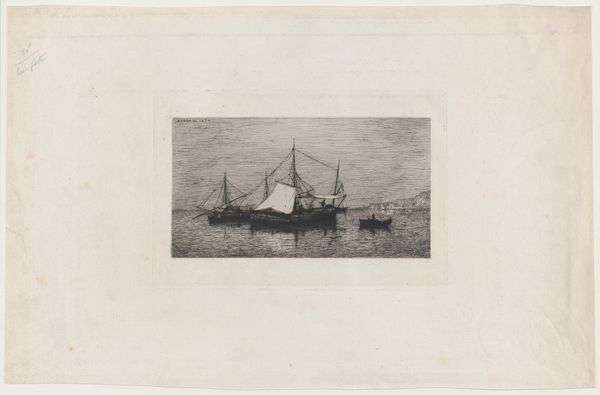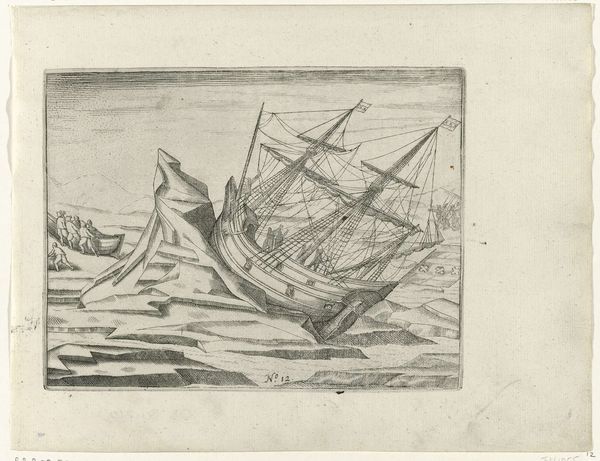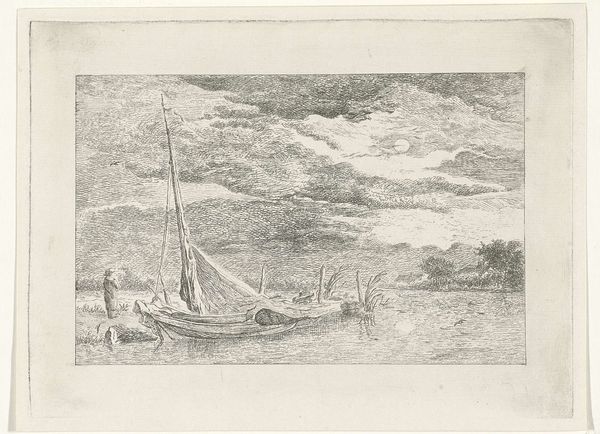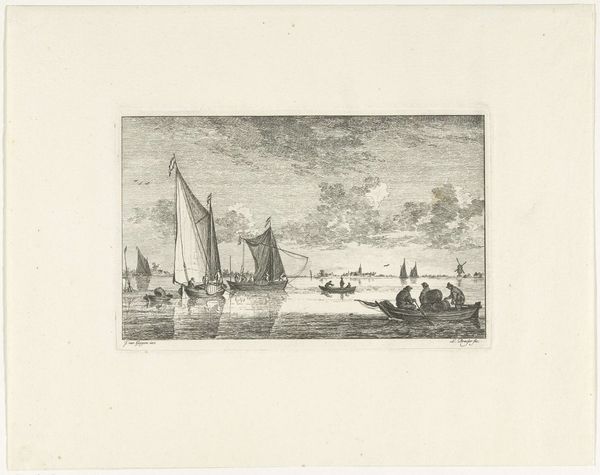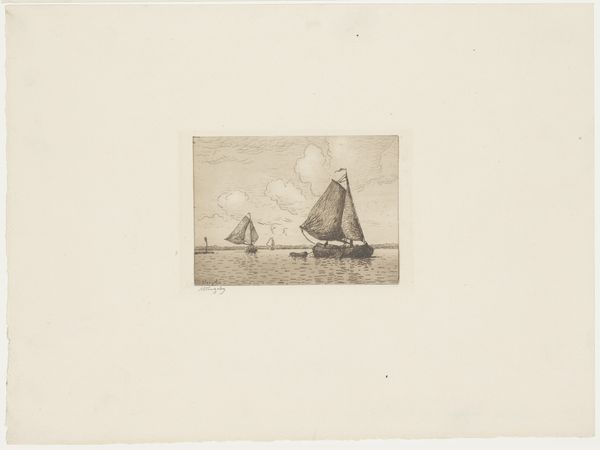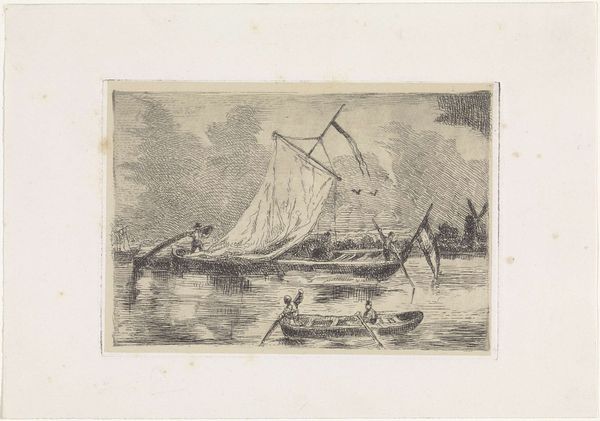
print, engraving
#
dutch-golden-age
# print
#
pen illustration
#
landscape
#
engraving
#
realism
Dimensions: height 73 mm, width 113 mm
Copyright: Rijks Museum: Open Domain
Editor: So, this is Mathäus Berkman’s “Seascape with Three-Master,” an engraving from 1770. It's incredibly detailed for a print, and the waves especially feel very alive. What historical context might inform how we view this work? Curator: Well, remember that seascapes in the 18th century weren’t just about pretty pictures of boats. Think about the Dutch Golden Age legacy—maritime power equaled economic power. Editor: So the ships…they are symbols of…trade routes, colonial power? Curator: Precisely! This print probably wasn't just displayed as a serene view. Ask yourself, who was consuming images like these? Wealthy merchants? Government officials? For them, these weren't just ships; they were visual representations of their influence and global reach. What’s the composition doing here? How is our eye guided? Editor: I see, we’re led from this imposing vessel on the left, toward the others fading into the horizon. It emphasizes distance, maybe even ambition. So the darkness of the sky… could that indicate a brewing storm, or…unease? Curator: Perhaps! Art like this can also reflect societal anxieties about maintaining that maritime dominance. Notice also how the artist positioned that very large ship in the lower left corner of the image as almost a “doorway” into the scene, suggesting the ship is the threshold by which the riches of the world can enter society. Editor: Fascinating. It gives new depth to what initially seemed like just a seascape. I never considered the layers of socio-political commentary. Curator: And that's exactly why understanding the historical landscape is so important. Art doesn’t exist in a vacuum; it’s always in dialogue with its time. Editor: I see it now. I'm leaving with much to ponder today. Thanks for guiding me!
Comments
No comments
Be the first to comment and join the conversation on the ultimate creative platform.
